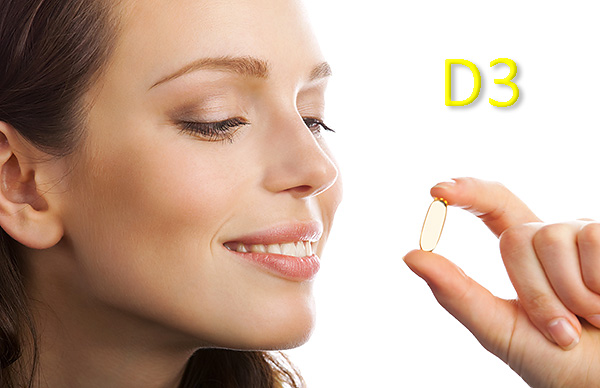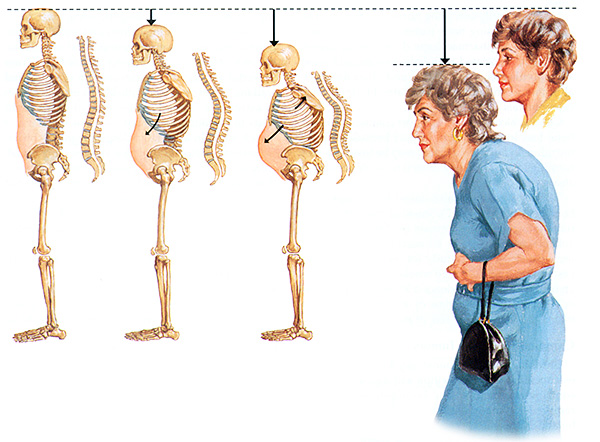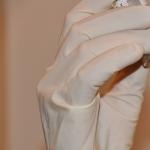The female body needs an increased level of vitamins, due to physiology that is different from the male, this is a proven scientific fact. Physical and moral stress, which is more difficult for a woman than for a man, monthly blood loss during menstruation, pregnancy, childbirth, and feeding a baby, all this leads to a significant increase in the intake of nutrients "stored" in advance.
You can talk about everything in the complex for a long time, let's find out today what vitamin D3 is, why women need it, what its deficiency or excess is expressed in, and also what foods it would not hurt to consume to create the perfect balance.
A unique vitamin for women: what's what
Doctors consider an enzyme called cholecalciferol, which is the notorious vitamin D3, to be one of the most important substances for women's health. Without a sufficient amount of it, bone tissue can significantly weaken, for many, the menstrual cycle is disrupted, the skin ages faster, and overall well-being worsens. It affects the content of glucose in the blood, the speed and quality of metabolism.
entertaining
For many years, scientists have studied the male and female bodies for the effects of certain vitamins and nutrients. Recent results indicate that in men, the production of vitamin D3 is directly related to the male hormone testosterone. The more of this substance, the greater the "level of masculinity."
 What is vitamin D3
What is vitamin D3
The human body must receive two vitamins from this group, D2 and D3. The first has the scientific name ergocalciferol and is not secreted by the human endocrine system. Therefore, it can enter the body exclusively from third-party sources. For example, it is this substance that is found in many cultures of yeast fungi, as well as some plants, but in the form of provitamin ergosterol. When broken down by the body, this substance forms the notorious D2.
Cholecalciferol (D3) can be obtained by a person in two main ways. Firstly, it is independently synthesized in the dermis of the human body, and it is obtained from cholesterol, which is converted to D3 under the influence of ultraviolet radiation. Secondly, such a vitamin can be obtained from food, but exclusively of animal origin. Remember that contrary to misconceptions, cholecalciferol is not found in plants and it is impossible to get it from greens, sunflower oil or fruits.
 What does cholecalciferol do
What does cholecalciferol do
To understand how it all works, it does not hurt to find out how vitamin D3 for women affects various body systems. This is an amazing substance, because it can act like a hormone, regulating carbohydrate metabolism, and also promote the absorption of many trace elements necessary to ensure proper life.
- Nervous system and musculoskeletal system.
It is this substance that ensures stable and constant growth of the nervous tissue, which is the most difficult to restore in case of violations. The ability of muscles and muscles to contract, and therefore the work of the entire musculoskeletal system, depends on the state of neurons, and vitamin D3 is responsible for the regeneration of these cells and maintaining them in a “working” state.
Without the participation of D3, calcium will not be absorbed in the body, and it enters not only bone tissue, but also blood, muscles, teeth, and ligaments. If the substance does not enter from the outside, the body begins to “wash out” it from its own bones, as a result of which they can change their structure, weaken, and osteoporosis is provoked. For women, this process is especially dangerous during pregnancy, childbirth and lactation, as well as during menopause. An unborn child, with a deficiency of cholecalciferol in the mother, may well acquire rickets.
- The immune system and the musculoskeletal system.
The ability of a woman’s body, like a man’s, to fight an external infection largely depends on the production, performance and quantity of immune cells, and this substance affects the quality and speed of their production. Infection can lead not only to the development of various diseases in the patient herself, but also to miscarriage during pregnancy, abnormal development of the fetus. The constant weakening of a woman's immune defenses leads to cancerous tumors, infertility, skin and intestinal diseases, multiple sclerosis and other unpleasant consequences.
Regarding the musculoskeletal system, the effect of vitamin D3 on it is enormous in adolescence and during puberty. Therefore, if a girl does not receive enough of this substance, proper development and coordination of movements may be disturbed. Therefore, regular exposure to the sun, as well as proper and balanced nutrition, is of particular importance.
- Endocrine system.
Recently, it has become fashionable to attribute any inconvenience of the body and even psychology to hormones, which are produced by the endocrine system. In part, this is true, and cholecalciferol "knows how" to regulate their production. For example, it regulates blood glucose by catalyzing carbohydrate metabolism in the liver, increasing insulin sensitivity. With an insufficient amount of vitamin D3, an excessive release of estrogen in the ovaries occurs, which disrupts the cycle, premature menopause or infertility may occur.
D3 plays a huge role in metabolic rate and proper fat burning, especially during the onset of menopausal symptoms. Special attention should be paid to taking drugs containing cholecalciferol.
Dosage of vitamin D3 for women

Most often, a deficiency in the body of such a substance as cholecalciferol is observed in those women who live in regions where the longest winter is, there are few sunny days a year, where fogs and regular rains are constantly observed. Climatic, as well as industrial, air dustiness in large and small settlements can also play a detrimental role, that is, slow down the production of natural vitamin D3 by the skin. At the same time, the need for it greatly increases during pregnancy, in adolescence and old age. But what exactly, what numbers and indicators can be considered the norm in the blood of women?
Natural cholecalciferol (vitamin D3) cannot be synthesized from cholesterol in human skin if it is covered with clothing or smeared with a special sunscreen. This must be remembered when going for a walk on fine summer days, on a river or sea. A solarium can make up for some deficiency even in winter, but it should be borne in mind that excessive enthusiasm for such procedures can lead to the risk of oncological diseases of the dermis.
 Daily rate
Daily rate
Serious and attentive attitude to your own body will help to minimize the threats and risks of various diseases. The daily dose of vitamin D3 for women, girls or girls may be different and it is important to closely monitor this, otherwise you can suffer not only from a lack of these substances, but also from their overabundance. At different ages, the requirements of the body are different, you should clearly understand what, when and in what quantity you need.
- For girls and young teenage girls, ten micrograms (400 IU) in twenty-four hours will suffice.
- Young women can take the same amount of vitamin D3, since the body's needs during this period do not increase, but rather decrease. The same ten micrograms will be enough.
- Pregnant and lactating mothers need a significant increase in the dose of cholecalciferol to twelve and a half micrograms (500 IU). The baby must also receive his dose of the substance that comes to him, either through the umbilical cord before birth, or through breast milk when feeding in the first months of life.
- Older women, especially after menopause, should receive an increased dose of vitamin D3 every day. For those who have reached the sixty-year milestone, about fifteen micrograms (600 IU) will be required for normal functioning and maintenance of all body systems.
If a woman or girl does not receive the required amount of cholecalciferol, then negative consequences may occur, which also do not hurt to discuss. With an overabundance, nothing good will happen, therefore, you must always be careful with your body and monitor your health in order to reduce the negative consequences to zero.
 Flaw
Flaw
We have already found out why women need vitamin DZ, so there should be no more questions here. However, another important nuance is the possibility of diagnosing its shortage or excess. An insufficient amount of substance is felt by those representatives of the fair sex who constantly live in regions with little sunshine, where rain, fog and grayness prevail over dry and cloudless weather. But what exactly can cause beriberi, regarding cholecalciferol?
- D3 may be lacking in those who diet regularly or just long enough, or who are fond of vegetarianism. As you know, this substance is practically not contained in plant raw materials, therefore it cannot be obtained from there. Here you need a mandatory consultation with a doctor who will help you choose a drug that will compensate for the vitamin deficiency in the body.
- A variety of kidney diseases can cause hypovitaminosis of cholecalciferol. Replenishing it on your own, in this case, will hardly work.
- During pregnancy, as well as subsequent feeding of the child, the level of D3 in the mother's body may decrease. Preparations for replenishment must be prescribed by a doctor, otherwise it can harm the baby.
Symptoms of beriberi are common to all, women experience increased fatigue, bone fragility and frequent fractures, constant anxiety and insomnia. Deterioration in the condition of teeth, hair and nails can also be a clear sign that you need professional medical help to replenish cholecalciferol deficiency.
 oversupply
oversupply

In the same way as the lack of any vitamins in the human body, and even more so in a woman, their overabundance can also be dangerous. This is very important to understand so as not to cause more trouble than good, taking drugs at your own peril and risk. Cholecalciferol tends to accumulate in fatty tissues, and then gradually consumed, as needed. But in some cases, it turns out to be so much that it begins to synthesize excess calcifications (calcium salts) in the blood, which settle in the heart, kidneys, lungs and joints. This can lead to serious illness, so watch your symptoms carefully.
- Regular heart palpitations, hypertension and arrhythmia can be a sign of an excess of vitamin D3.
- An enlarged liver is also often associated with problems of excessive absorption of calcium, and therefore an increased level of this substance.
- Significant weakening of the immune system, frequent colds and viral diseases.
- High fever, nausea, vomiting, diarrhea and increased thirst.
- Inflammation of the kidneys, poor urination, the presence of leukocytes and protein in the urine may indicate a similar problem.
When performing analyzes for imbalance of vitamins, doctors find a significantly increased level of calcium, as well as phosphorus. An excess of cholecalciferol can turn out to be even more dangerous and worse than its lack, therefore, in no case should you self-medicate, “prescribing” drugs to yourself, without having any medical education.
Video tip on how to make up for the lack of vitamin D3 from foods
What is cholecalciferol, where does it come from and what is the daily requirement of vitamin D3 for women, we have already found out, it remains to figure out what foods it can be obtained from without fear of an overdose. This question is actually difficult, therefore we recommend watching a video hint that will put everything in its place and give a certain understanding. The only thing I would like to focus on once again is the self-administration of drugs with this substance. No need to experiment on yourself, first go to the doctor, because only he can tell you exactly what problem is haunting you.


